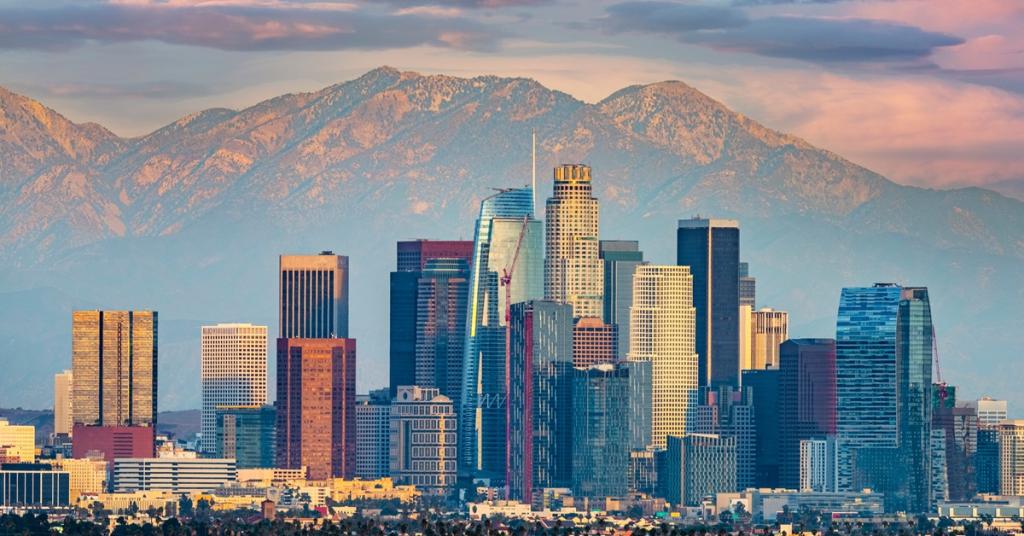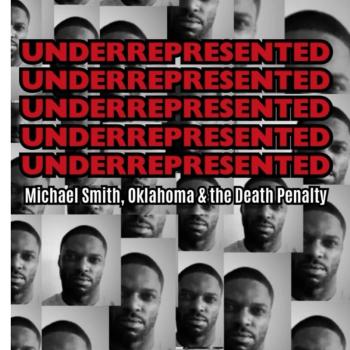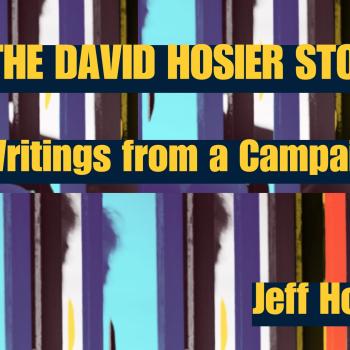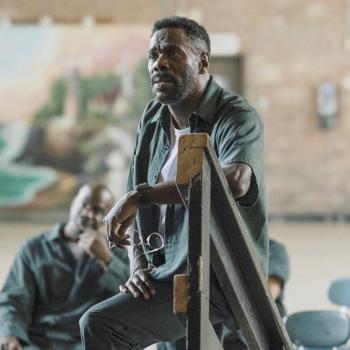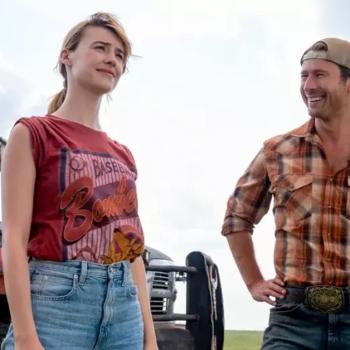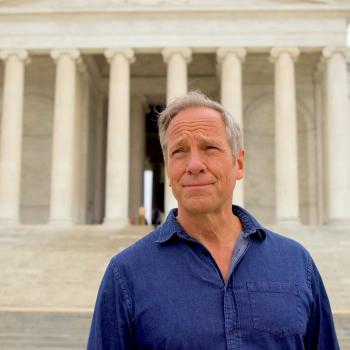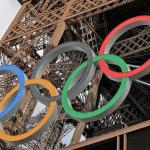God knows I grumble a lot about life in L.A. — and I know of which I speak. But it’s not like the movies didn’t warn me before I arrived here.
My Days in L.A.
I’ve lived in Los Angeles for 20+ years now, and in my job as an entertainment journalist, I have visited locations all over the vaunted 30-mile-zone that encompasses greater Hollywood (and gave TMZ its name, BTW).
So, having spent days in such places as behind a bank in Van Nuys, in the frozen-food section of a supermarket in Reseda, down on the docks in Long Beach, at a empty bus stop in Santa Clarita, in the halls of CalTech in Pasadena, outside a warehouse in downtown LA, on the streets of Boyle Heights, and in an abandoned hospital in Inglewood — along with every studio lot and whatever else passes for soundstages — I have earned my opinion.
As a city, L.A. is a mess — and that goes for Beverly Hills, Santa Monica, Culver City and all the other municipalities that make up the greater metropolis. To be fair, it’s hardly the only American city with problems. But, like a true Hollywood production, L.A.’s woes are on a grand scale and, if nothing else, colorful.
But …
On the other hand, Southern California is richly blessed with beauty — mountains, beaches and sea — and a ridiculously salubrious climate, which is what drew the movie industry here in the first place.
As I sit today at lunchtime in West L.A., with much of the country (including parts of California) baking in record heat, it’s overcast and 74 degrees outside, and I have only used my A/C briefly a couple of times so far this summer.
Fear not, it’s coming — and the worst is September and October. Fall is crisp here, and the hills are often ablaze, but not for the same reasons as back East.
To one degree or another, I suppose L.A. has always been complicated and contradictory, especially since the film industry moved in. Every now and then, Hollywood cranks out a movie about the city that is its titular (if not always actual, these days), home town.
Here are a few that, to me, exemplify Los Angeles, for good or ill, and prepared me for what I would find here.
Chinatown (1974)
Mulholland is a very familiar name in L.A., attached to a winding drive through the Hollywood Hills. It’s named after Irish-immigrant civil engineer William Mulholland, one of the early water barons whose ruthless manipulation of the area’s rivers and aquifers made the modern city possible.
Written by the recently late Robert Towne (more or less, if you read producer Robert Evans’ excellent autobiography, The Kid Stays in the Picture), and directed by Roman Polanski (who makes a cameo), it’s ostensibly about private eye Jake Gittes (Jack Nicholson) investigating an infidelity that turns into a murder that turns into a mystery.
But, really, it’s a fictionalized (and sensationalized) account of Mulholland and Los Angeles’ water wars in the early decades of the 20th Century.
Water is the lifeblood of a desert city, and a lot of blood (and treasure) have been spent to obtain it.
Set in the late 1930s, Chinatown covers the complexity of a city that has both exploited and warred with nature since its beginning. It can be rented/purchased in multiple places, and streamed on Max and Paramount+.
Speaking of L.A. and its natural resources …
The Two Jakes (1990)
Can’t recommend Evans’ autobiography (especially the audio version, which he reads) highly enough for deep background on both Chinatown and its long-delayed and much-embattled sequel.
With another script by Robert Towne (again, more or less), Nicholson directed and reprised his role as Jake Gittes. Only this time, it’s not water that’s at the heart of the plot, but oil.
Tourists and casual visitors may not realize, but L.A. is dotted with oil wells. One used to sit right next to Beverly Hills High School.
I spent a day with producer Hart Hanson’s 2012 Fox series The Finder, filming amid the dirt roads of the large Inglewood Oil Field, now surrounded by the upscale neighborhood of Baldwin Hills.
This time around, Jake Gittes is dealing with client Jake Berman (Harvey Keitel), a land developer who says his wife (Meg Tilly) may be cheating on him. He’s looking to build houses in the San Fernando Valley, which used to grow oranges, but still has lots of oil under the ground.
The plot ties in with Chinatown, but underneath it (literally and figuratively) is the fight over land, oil and natural gas — with a few California earthquakes thrown in for good measure.
You can’t stream it anywhere, but it can be rented/purchased at all the major places.
L.A. Confidential (1997)
Adapted by producer, director and co-writer Curtis Hanson (with Brian Helgeland) from one thread of James Ellroy’s sprawling novel of the same name, this film isn’t about L.A.’s natural environment, but its legal, political and economic ones.
Set in 1953, the film stars Russell Crowe and Guy Pearce as two LAPD detectives — enemies who become frenemies and eventually actually friends — who get caught in the intersection of police corruption and movie celebrity.
While many cities have had their famous gangsters and organized-crime sagas, that hasn’t really been L.A.’s story. There was a mobster, Mickey Cohen, much discussed in the film, but the crime history of Los Angeles is far more complicated, multifaceted and slippery.
I recommend the book for a fuller picture, but L.A. Confidential — which begins during a rainy Christmastime — touches on controversies about the LAPD (which continue to this day, the cleaner-than-clean Adam-12 notwithstanding), racial tensions, and the dark underbelly of moviemaking.
It can be streamed on Plex, and rented/purchased from all the usual places.
L.A. Story (1991)
In contrast to the previous three films, which are L.A. noir, L.A. Story — written by star Steve Martin and directed by Mick Jackson — is drenched in sunshine.
This satirical romantic comedy casts Martin as a floundering L.A. weatherman who falls for a London journalist (Victoria Tennant). Shortly afterward, one of L.A.’s ubiquitous freeway traffic-condition signs begins giving him personalized messages. It acts as a kind of love coach and spiritual guide.
This isn’t the only wacky thing in the film, which perfectly encapsulates the goofy, ridiculous, pretentious, shallow delights of L.A. Personifying these is ditzy, aspiring spokesmodel SanDeE*, played by Sara Jessica Parker (who went on to encapsulate upscale Manhattan in Sex and the City).
Frothy and sweet, L.A. Story is actually, in many ways, a documentary about a city that is hard to satirize, since it’s just so absurd every day.
It can’t be streamed anywhere, but you can rent/purchase it.
Speed (1994)
One of my all-time-favorite action films, Speed moves from Clownerina, the bizarre giant clown-headed ballerina in Venice Beach, to the freeways to LAX (actually filmed in Lancaster, since LAX is on the beach and doesn’t have mountains nearby).
Keanu Reeves stars as an LAPD detective who gets caught up in a terrorist’s (Dennis Hopper) campaign of revenge. The centerpiece of it is a bus full of passengers, strapped with a bomb that will go off if the bus drops below 50 mph. A luckless motorist (Sandra Bullock) winds up in the driver’s seat.
As anyone who’s traveled on the L.A. freeway system on a typical weekday will know, it’s difficult to get up to 50, let alone stay there for any length of time.
Shot by director Jan de Bont in large part on the 105 Freeway, then under construction, Speed was credited to writer Graham Yost, but it features lots of contributions from script doctor Joss Whedon.
As Yost said to me in 2003, in a story on his NBC series Boomtown:
And besides, Yost admits that he didn’t even write all of “Speed.” “Joss Whedon wrote 98.9 percent of the dialogue,” he says. “We were very much in sync, it’s just that I didn’t write the dialogue as well as he did. That was a hard part of the whole ‘Speed’ thing. It’s my name up there, but I didn’t write the whole thing. But I fought hard to get that credit, so I’ll live with it.”
Speed can be streamed on Starz, Hulu, and The Roku Channel, and rented/purchased in many places.
The climax of the bus sequence in Speed isn’t the end — which actually deals with the subway under Hollywood. Speaking of which …
Volcano (1997)
I have a deep and abiding love for this disaster film, directed by Mick Jackson from a screenplay by Jerome Armstrong and Billy Ray, from Armstrong’s story.
Tommy Lee Jones stars as the head of L.A.’s Office of Emergency Management, who’s called off vacation to help when a volcano erupts out of the LaBrea Tar Pits on Wilshire Boulevard. Helping him is his competent associate (Don Cheadle) and a geologist (the late Anne Heche).
Volcano is chock-full of local L.A. landmarks, including the Hollywood Sign, the Beverly Center mall, Cedars-Sinai Hospital, Wilshire’s Miracle Mile, the Ballona Creek and Marina del Rey — with a cameo by news reporter Shepard Smith.
Also, I have asked myself, is Volcano the most religious disaster film ever made? Here’s my case for that:
* Voiceover at the beginning from a mix of radio announcements:The devil knows the wickedness of the city. He knows he can prey on our ignorance. He knows he can stoke unrighteous thoughts in our heads, and that he can turn those thoughts into unrighteous deeds.’* The first confrontation between an LAPD officer and an angry local takes place at a church, with a Cross overhead and a cleric in a Roman collar nearby.
*First injured worker is taken to a real hospital, St. Vincent’s (incidentally, one of the streets in the volcano area is San Vicente).
* Dialogue between two workers unloading paintings from a burning museum:– Right now. Let’s go, hurry up.– God, this Hieronymous Bosch is heavy.– That’s ’cause he deals with man’s inclination to sin, in defiance of God’s will.– I didn’t mean it like that.– Oh.*Dialogue between Jones and Heche:AH: Oh, God, this is so stupid. This city’s finally paying for its arroganceTLJ: Which particular arrogance is this?AH: Building a subway under land that’s seismically active.TLJ: It was a foolish man that built his house upon the sand.AH: Matthew 7:26, a favorite among geologists.Heroic city worker recites the Hail Mary as he carries a subway conductor through a lava-struck train.
Image: Adobe Stock
Don’t miss a thing: Subscribe to all that I write at Authory.com/KateOHare.


